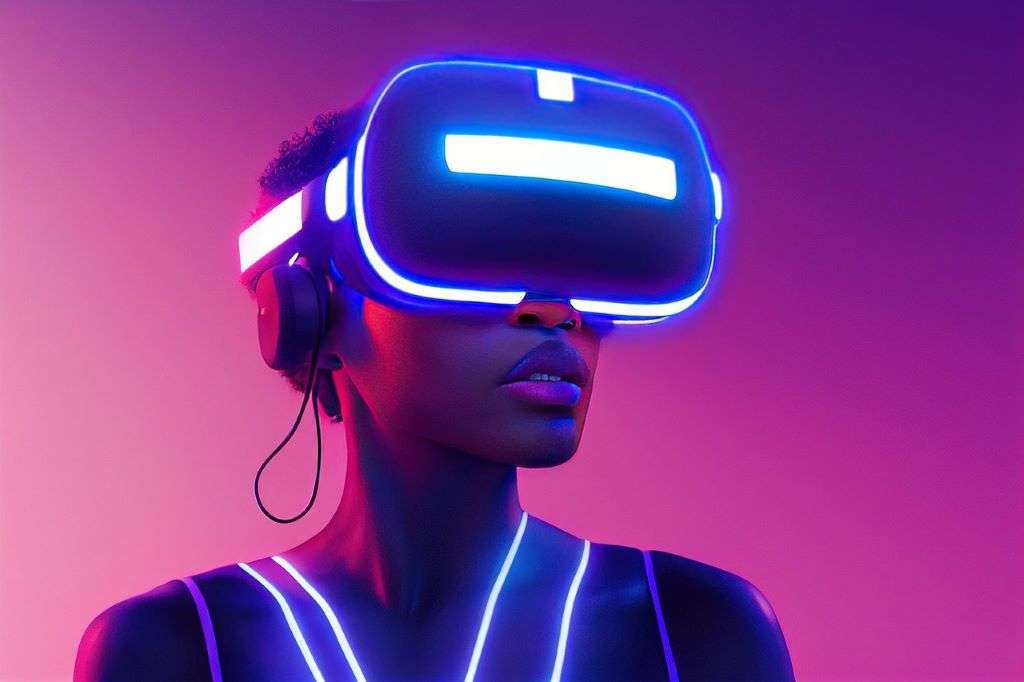Virtual Reality (VR) and Augmented Reality (AR) have quickly transformed from science fiction dreams into tangible technologies that impact our everyday lives.
As we look ahead, the potential of VR and AR holds promising opportunities to revolutionize industries, from gaming and entertainment to education and healthcare.
This article explores the future of these immersive technologies and how they may redefine our perception of reality.
Table of Contents
A Brief Overview of VR and AR
Before diving into the future, it’s crucial to understand these technologies‘ basics. Virtual Reality (VR) immerses users in a fully digital environment.
Through a VR headset, users can explore and interact with a 3D world.
Conversely, Augmented Reality (AR) overlays digital information onto the real world.
Using a smartphone or AR glasses, users can see and interact with virtual objects within their physical surroundings.
The Evolution of VR and AR Technology
Early incarnations of VR and AR were primarily focused on gaming and entertainment.
Games like Pokémon Go popularized AR, while Oculus Rift and HTC Vive headsets brought high-quality VR experiences to the masses.
However, as these technologies mature, their applications are rapidly expanding into other sectors.
The Future of VR and AR in Education
VR and AR have the potential to revolutionize the education sector by offering immersive, interactive learning experiences.
Virtual field trips could take students to far-off locations or even different time periods.
AR could bring complex concepts to life, helping students visualize and understand difficult subjects.
These technologies could enhance student engagement and make learning more accessible and personalized.
The Future of VR and AR in Healthcare
In healthcare, VR and AR technologies could significantly enhance both patient care and medical education.
VR can be used for therapy and pain management, providing immersive environments that can help with everything from physical therapy to mental health treatment.
AR can assist in surgical procedures by overlaying digital images onto the patient, providing real-time data to the surgeon.
Both technologies can also be used for medical training, providing realistic simulations for future healthcare professionals.
The Future of VR and AR in Business
From design and manufacturing to marketing and remote collaboration, VR and AR have wide-ranging potential in the business world. VR can be used for virtual prototyping, allowing engineers to test and modify designs in a cost-effective and efficient manner.
AR can enhance customer experiences, offering interactive product demonstrations or AR-enhanced shopping experiences.
Furthermore, as remote work becomes more prevalent, VR and AR could play a crucial role in virtual meetings and collaborative workspaces.
Challenges Ahead
Despite the vast potential, several challenges need to be addressed for VR and AR to reach their full potential.
These include improving user comfort and reducing motion sickness in VR, enhancing the quality of AR overlays, developing user-friendly interfaces, and addressing privacy and security concerns related to these immersive technologies.
Conclusion
As VR and AR technologies continue to evolve, they hold the promise to redefine our interaction with the digital world and transform various sectors.
While challenges persist, the potential benefits of these technologies make them an exciting area for continued research and development.
By pushing the boundaries of immersive experiences, VR and AR are set to unlock a new realm of possibilities.
FAQs for Virtual Reality and Augmented Reality:
- What is Virtual Reality (VR) and Augmented Reality (AR)?
- VR creates a fully immersive digital environment, while AR overlays digital content onto the real world. Both technologies alter our perception and interaction with the environment.
- How do Virtual and Augmented Reality differ?
- VR immerses users in a simulated environment, isolating them from the real world. AR enhances the real world by overlaying digital information on it, allowing users to interact with both the physical and virtual elements simultaneously.
- What are common applications of Virtual Reality?
- VR is used in gaming, simulations (training and education), healthcare (therapy, surgical simulations), architecture, and entertainment, providing users with an immersive, computer-generated experience.
- How is Augmented Reality applied in everyday life?
- AR finds applications in navigation, gaming (e.g., Pokemon Go), retail (virtual try-ons), and industrial settings. It enhances real-world experiences by adding contextual digital information.
- Are Virtual and Augmented Reality the same as Mixed Reality (MR)?
- No, they are distinct. MR combines aspects of both VR and AR, allowing digital objects to interact with the real world and vice versa, creating a more integrated and interactive experience.
- What are the challenges associated with Virtual and Augmented Reality?
- Challenges include hardware costs, motion sickness in VR, the need for powerful computing resources, and ensuring seamless integration of digital and physical elements in AR.
- Are there health concerns related to prolonged use of Virtual Reality?
- Prolonged VR use can lead to issues like eye strain, motion sickness, and disorientation. It is advisable to take regular breaks and be mindful of usage time.
- How is Virtual and Augmented Reality transforming education?
- VR and AR enhance learning experiences by providing immersive simulations, virtual field trips, and interactive 3D models. These technologies make complex subjects more engaging and accessible.
- What is the impact of Virtual and Augmented Reality on industries like healthcare and manufacturing?
- In healthcare, VR aids in surgical planning and training, while AR assists in medical imaging. In manufacturing, AR can be used for maintenance and assembly guidance, improving efficiency and accuracy.
- Are there privacy concerns with the use of Augmented Reality in public spaces?
- Yes, privacy concerns exist. AR can capture and overlay information about individuals, raising questions about data security and consent. Regulations and ethical considerations are crucial in addressing these concerns.
These FAQs provide an overview of Virtual and Augmented Reality, their applications, challenges, and impact on various industries and aspects of daily life.



Comments